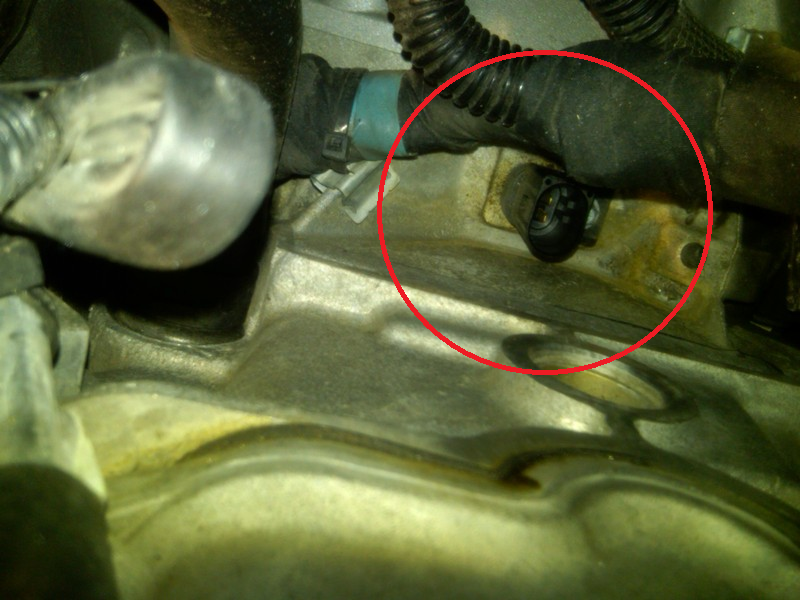Mercedes-Benz E-Class and E-Class AMG: Why Won't My Car Start?
Having a car that will not start can be a major inconvenience. Not only do you have to make changes to your schedule or arrange for grandma to pick up the kids, but you have the burden of an expensive repair bill looming over your shoulder. Thankfully, there are several common components that fail on the w211 E-Class that can be identified and replaced by the do-it-yourselfer, preventing a costly trip to the repair shop.
This article applies to the Mercedes-Benz E-Class and E-Class AMG w211 (2002-2009).
A car that will not start typically occurs at the most inconvenient time, and can leave you feeling down as well as dejected. And because Mercedes-Benz uses such a large amount of computers and electronic gizmos in their cars, it can seem incredibly overwhelming to even begin thinking about diagnosing the problem. Fortunately, the w211 model range has been out long enough that many of their quirks as well as problems have been well documented, so it can be easily diagnosed and repaired at home. This article will give an overview of the most common issues that will prevent your E-Class Mercedes from starting. Most of the components that fail are readily available at most parts stores, which can quickly be swapped out to get your car up and running again.

Materials Needed
- Digital multimeter
- Ratchet, extension, E8 Torx socket
- Battery load tester
Step 1 – Check the battery
For a majority of individuals experiencing a no-start condition in their E-Class, the issue is often caused by a bad/dead battery. With the w211 models getting on in age, the factory installed batteries are nearing the end of their lifespans, since most batteries are rated for five to seven years. Additionally, modern Mercedes' use their fair share of electronics that have a constant draw on the battery, even when parked. Batteries in cars that are not daily driven are prone to fail sooner than a car that is regularly used. That being said, it is not uncommon for a battery to go caput and no longer be able to hold a charge, even if it has been functioning normally. If you car will not crank the engine, measure the battery voltage to determine the condition of the battery. This can be accomplished in one of two ways:
- The battery voltage can be measured from the dash by turning the key to position 1, followed by pressing the "R" (Reset) button on the dash three times. The battery voltage will then be displayed on the menu.
- The second method of measuring battery voltage is to access the battery underneath the carpeting in the truck, and use a digital multimeter for voltage measurement.
In either case, the voltage should read between 12.0 and 12.4 volts with the ignition key turned on. A voltage reading in the 10.5 range can often indicate a battery with a bad cell. If the battery can be charged and hold that full charge, it is usually a good idea to have the battery load tested before assuming it is in proper, working order. They can usually be tested for free at any local auto parts store.
In the event that the battery voltage checks out OK, the problem likely lies within a faulty ignition switch or transmission neutral safety switch. Many w211 owners report the changing of either of these components have restored starter functionality to their cars.
Featured Video: How to See Battery Power
Pro Tip
Depending on the year and model of your E-Class, it may be fitted with a primary and auxiliary battery. The main function of the auxiliary battery is to maintain power to the Sensotronic Brake Control (SBC) unit in case of a main battery/alternator failure. The auxiliary battery, however, does not play a role in cranking the engine.
If the engine cranks, proceed to Step 2.
Step 2 – Crankshaft position sensor
The engine DME computer (Digital Motor Electronics) is responsible for all key aspects related to keeping the engine running properly. This includes things like fuel injector pulse width and spark plug firing. The DME uses a number of sensors located throughout the engine to determine the correct amount of fuel, spark, ignition timing, etc. to meet the demands of the driver's inputs. If any one of these sensors fail, a check engine light accompanied by a code will often surface to let you know there is a problem.
In the event that your engine will crank but not start, the crankshaft position sensor is usually at fault. This is an extremely common problem across the w211 model lineup that prevents the DME from reading the rotating crankshaft, and thus not supplying any fuel or spark for combustion. This problem is so frequent that many owners will tell you that they keep an extra crankshaft position sensor in their glovebox for emergencies. Swapping out the sensor will usually restore functionality to your E-Class. And in a worst case scenario when this isn't the problem, you will still have a relatively inexpensive spare on hand for when your crankshaft position sensor does fail.

Pro Tip
Similar to the crankshaft position sensor, a faulty camshaft position sensor can lead to engine issues and, in some cases, cause the engine to shut off. However, a bad camshaft position sensor is not typically the cause of a no-start condition.
If you have replaced your crankshaft position sensor, proceed to Step 3.
Step 3 – Fuel pump and fuel pump relay
If the crankshaft position sensor is not your problem, it is likely that the engine is not getting fuel. Surprisingly, there have been quite a few reports of owners having faulty or dead fuel pumps in their w211s. There are a few steps you can take to diagnose a fuel related issue:
- First, and perhaps the easiest area to check, is the fuse/relay module located in the trunk. A bad fuel pump relay or blown fuel pump fuse will not allow the pump to send any fuel to the injectors. Swapping out a known good relay or fuse can possibly cure the problem and get your car started; however, a blown fuse may be indicative of a larger problem.
- The fuel pumps as well as sending units have plastic fittings that can become brittle and crack. Workshops have found that the damaged plastic fittings will cause a loss of fuel pressure as the car sits, and when attempting to start, will take a number of attempts before the fuel can make its way back up to the injectors. If you have made a habit of cranking your engine five or six times before you can get it to start, it's likely that fuel is bleeding out. This cause can be a bit harder to spot as fuel evaporates rather quickly, but gas fumes are usually a dead giveaway.
- Finally, a fuel pump can just flat out fail. A failed fuel pump may have been emitting a noisy like a high-pitched whine for a while prior to the no-start condition. One way to check for a faulty fuel pump is to measure fuel pressure while cranking the engine at the test port located on the engine's fuel injector rail. Additionally, an electrical test at the fuel pump using a digital multimeter can indicate if there is voltage running to the pump with the key on, and if the pump is reacting to the voltage that is supplied to it.

Pro Tip
It is worth noting that the National Highway Traffic Safety Administration (NHTSA) opened an investigation for all w211 E-Class models for potential leaks at the fuel tank and fuel sending units. Many owners were experiencing fuel leaks that would puddle under their vehicle.
Related Discussions
- Help Please: Car Cranks but Will Not Start - MBWorld.org
- Crankshaft Position Sensor DIY - MBWorld.org
- Replacing Auxiliary Battery a Must or Not? - MBWorld.org
- On Dash Voltage Display - MBWorld.org






